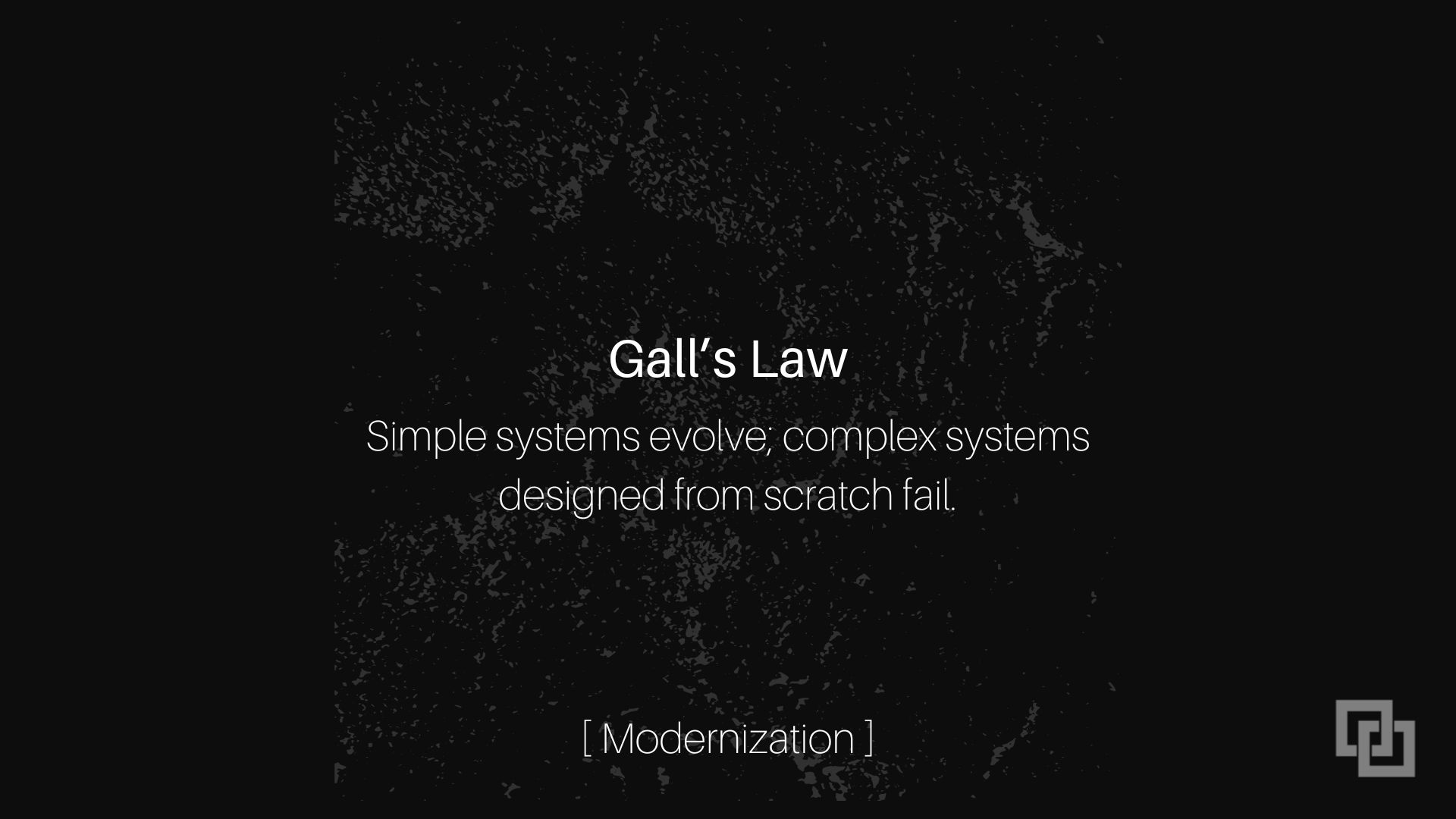Gall’s Law is a software development principle that states:
“A complex system that works is invariably found to have evolved from a simple system that worked. A complex system designed from scratch never works and cannot be patched up to make it work. You have to start over with a working, simple system.”
The AS/400 was designed to be reliable, secure, and easy to manage. Its simplicity comes from its integrated hardware and software architecture.
Applying Gall’s Law to the IBM i platform
Gall’s Law aligns with the evolutionary approach to IBM i system development.
The platform didn’t start as a complex system from scratch; instead, it evolved from simpler predecessors and has been built upon over the years. By design, the AS/400 and now the IBM i, in a sense, offers technology independence.
“The hardware platform is independent of the upper-level technology. And that allows us to slip out the old and insert the new. And it’s, for all practical purposes, seamless.” Retired IBM Chief Architect, Frank Soltis
Key aspects of IBM i evolution are:
- Simplicity in design: IBM i was initially designed with simplicity in mind. It was created to be easy to use and maintain for businesses that may not have had extensive IT expertise. The platform’s architecture and programming model were built to support this principle.
- Incremental development: Over the years, IBM i has seen incremental developments and improvements. New features and functionalities were added in a way that maintained backward compatibility and minimized disruption to existing systems. This allowed the platform to maintain its stability and reliability while evolving to meet changing business needs.
- Strong focus on backward compatibility: IBM i has a reputation for maintaining exceptional backward compatibility. Software written for older versions of the platform can often run on newer versions with minimal modifications. This approach allows businesses to leverage their existing investments and ensures a smoother upgrade path.
- Stability and reliability: The platform’s steady evolution, with an emphasis on stability and reliability, has resulted in a system that is renowned for its robustness and ability to handle critical business workloads with minimal downtime.
- Continuous improvement: IBM has continued to invest in the IBM i platform and add modern capabilities without compromising its fundamental design principles. This ongoing improvement process ensures that the platform remains relevant in the fast-changing world of technology.
The IBM i as a foundation for innovation
The IBM i platform has evolved over time to be adaptable to whatever changes arise.
It’s for any industry.
It is used in small, medium, and large enterprise organizations.
It can be used on-premise, or in the cloud, to leverage open-source and AI technologies.
It is a platform that will stand the test of time.
There is no telling where the IBM i platform will be in the next 35 years.
If you want to learn more, here is the IBM i Roadmap that will help you get there.
